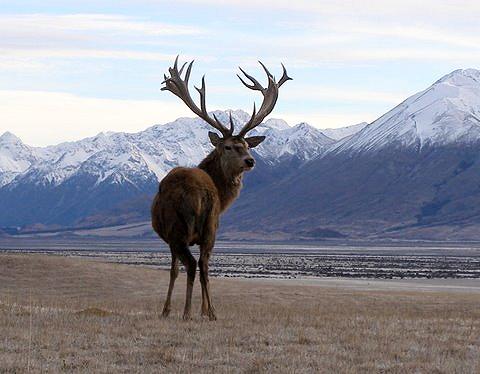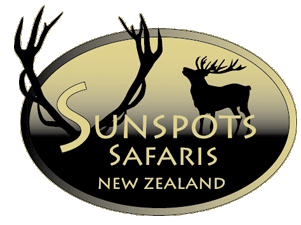New Zealand Red Deer History |
|
|
Red deer were brought to New Zealand by European settlers in the 1850's and 1860's, along with seven other species of deer: Wapiti, Sika, Sambar, Rusa, Fallow, White-tail, and Axis. Today, red deer is the most widespread species, existing in the wild and on farms on both the North and South Islands. The Wapiti, or elk, is a closely related species, living only in northern Fiordland, and was introduced in the early 1900's by US president Teddy Roosevelt. Unlike their native lands, New Zealand had no large predators, and so deer population grew quickly out of control, resulting in damage to certain plant species including Spaniard grass and Alpine buttercup, and virtual elimination of pate, broadleaf, and certain kinds of ferns. In the 1920's, deerstalking became a popular sport and tourist attraction, and some huge red deer trophies were taken. Until 1923, deer were protected by law, but by 1932 game seasons, bag limits and most other restrictions were dropped, as the deer population had grown to such an extent that the government now classified deer as "noxious animals". The Department of Internal Affairs took control of deer population management in 1930, hiring teams of deer cullers. Between 1932 and 1954, between 1.5 million and 3 million deer were killed. Commercial culling began in the 1960's, and helicopters were utilized to spot and shoot deer in large numbers--a single hunter could kill several hundred deer in a single day. |
� |

|
In 1937, the New Zealand Deerstalkers' Association was formed by recreational hunters as an alternative to the government's mass culling approach, providing hunting huts, and political lobbying for hunters.
In 1969, legislation was passed governing deer farming, creating a new industry. Stock for the farms was acquired by intrepid entrepreneurs leaping from helicopters onto wild deer and wrestling them rodeo-style to the ground; other would-be farmers shot nets over the deer and captured them that way.
Government-organized culling and commercial hunting have dramatically reduced deer populations down to where today they're at about 10% of the 1930's populations.
Today, the Department of Conservation governs hunting on public conservation land, permitting nearly completely open access. A few of the areas have a ballot system, where hunters enter a drawing for access to these areas for a limited period of time. Fiordland has a ballot system for Wapiti; Stewart Island for white-tail; West Otago's Blue Mountains for fallow deer.
In 1993, the deer population in New Zealand was estimated at a quarter of a million animals--three quarters of which were red deer.
